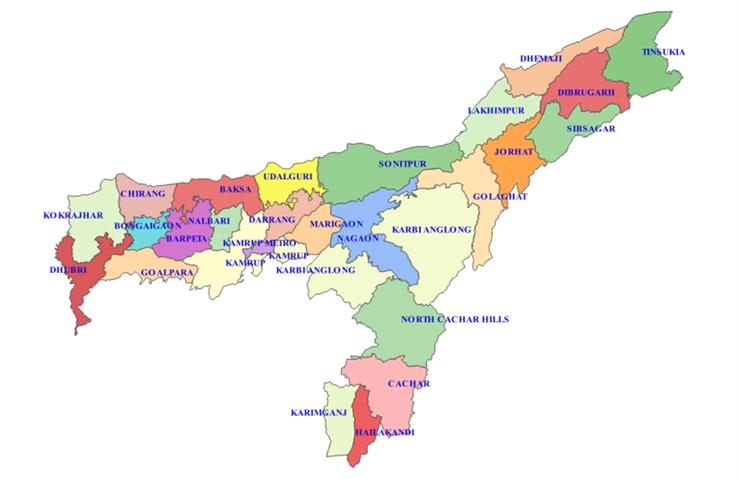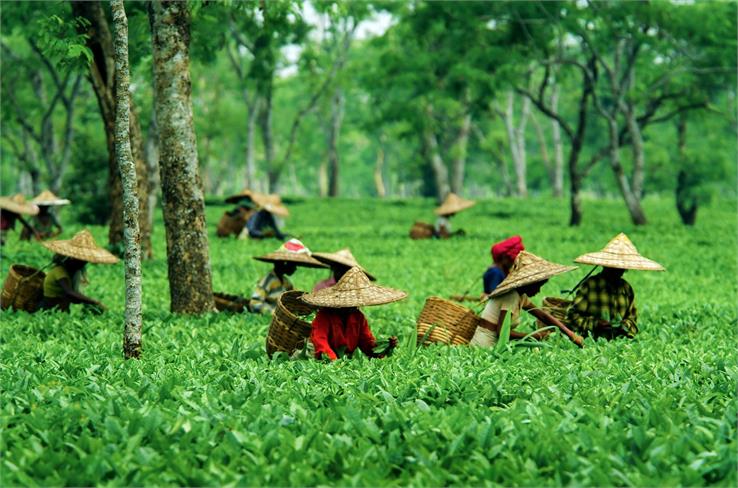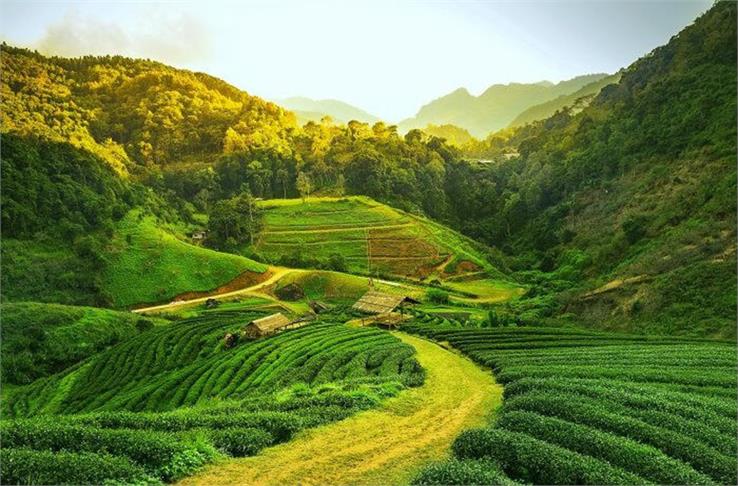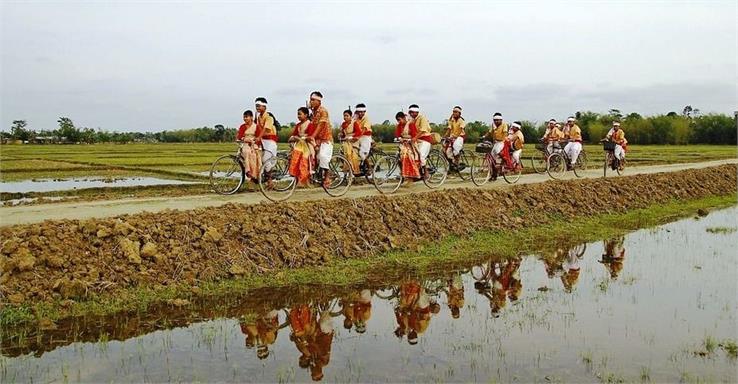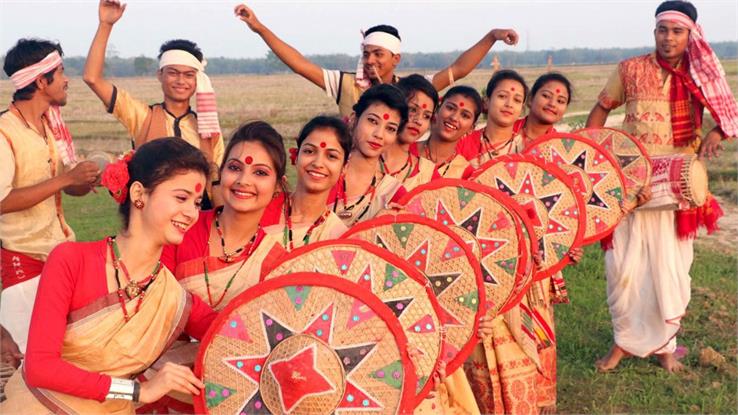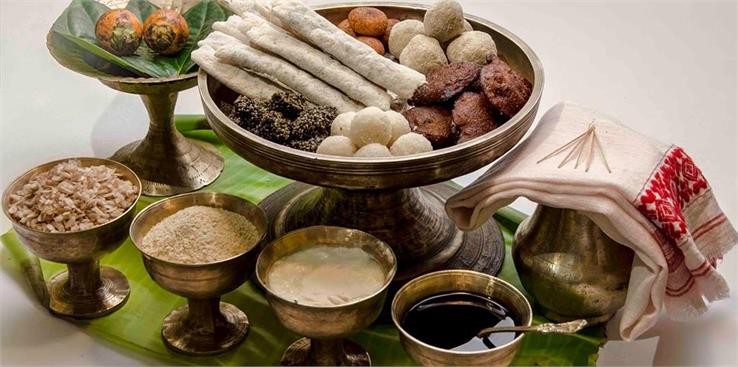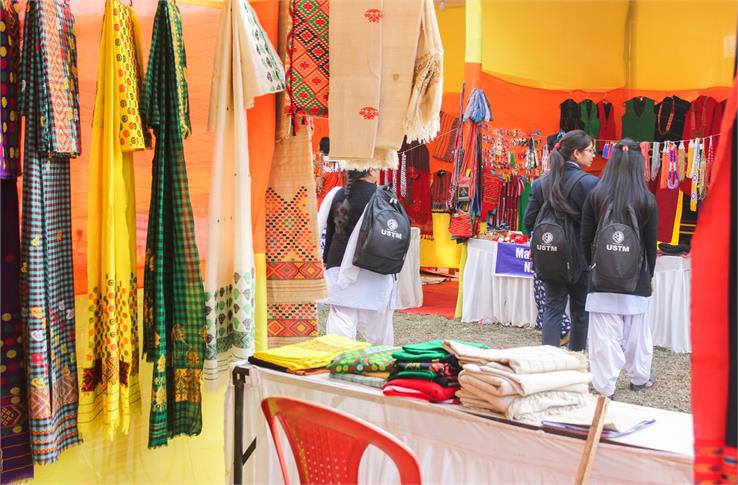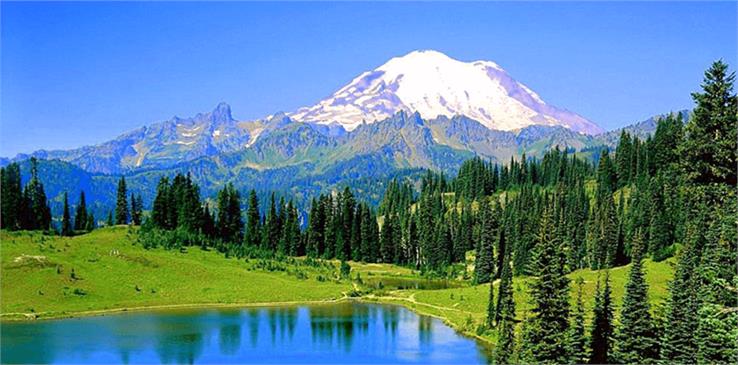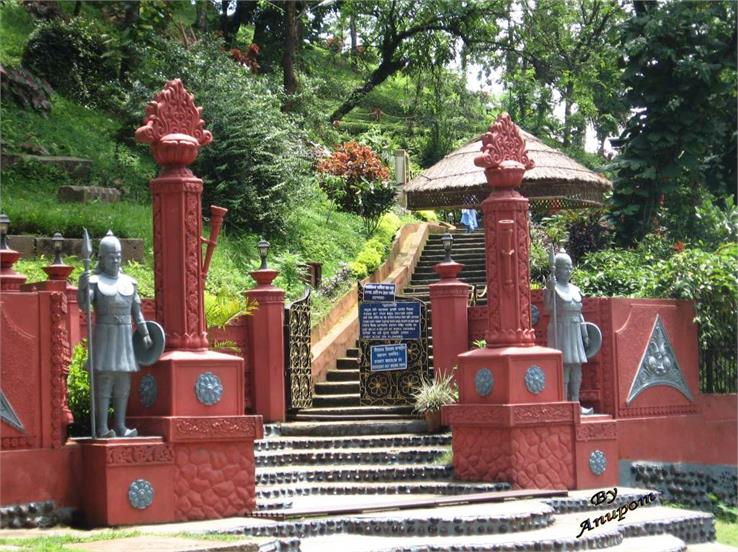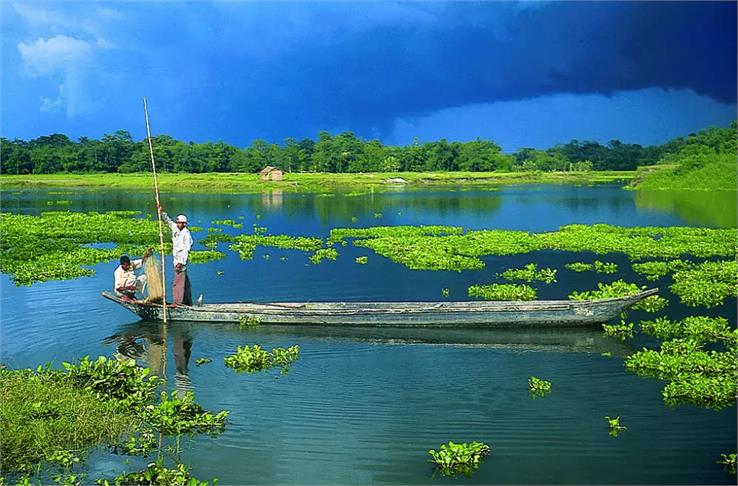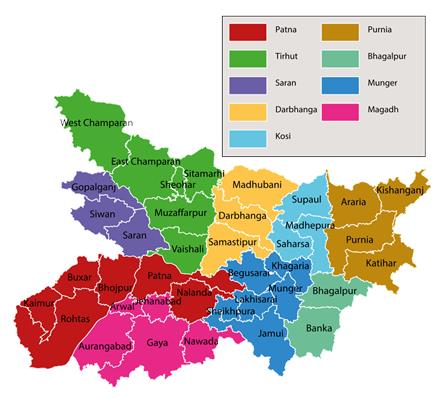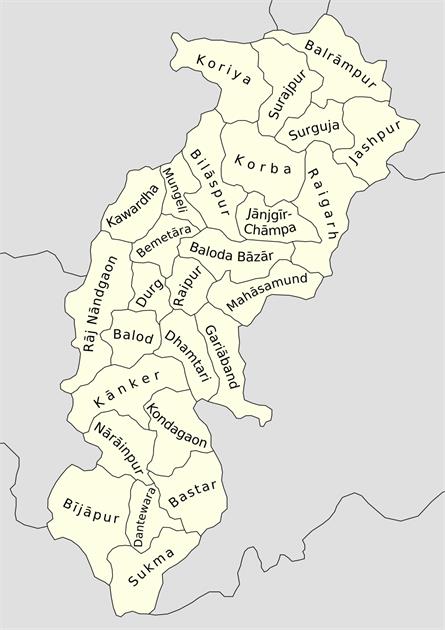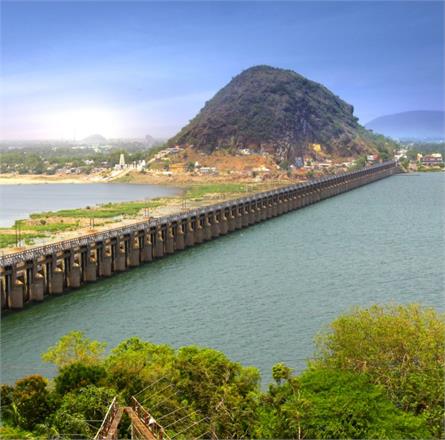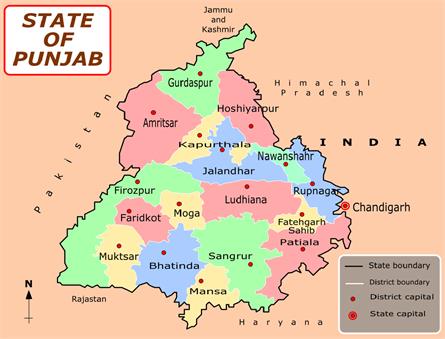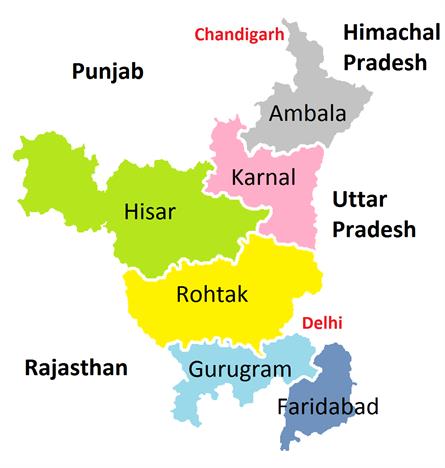Assam: A Gateway to North-East India
The sovereign state of India, Assam is popular for its natural beauty and diverse history. It is one of the least visited areas in the country, which is full of forests, rivers, and tea gardens. Assam is known as one of the top biodiversity hotspots all over the world, which shares international borders with both Bangladesh and Bhutan. Its vibrant culture and natural beauty attract tourists immensely.
Assam is one of the states that represents Seven Sisters of India and is surrounded by the remaining sister states; Tripura, Nagaland, Meghalaya, Mizoram, Manipur, and Arunachal Pradesh. Apart from this, Assam is also connected to the state of West Bengal and shares international borders with Bhutan and Bangladesh. Dispur (located in Guwahati) is the capital of Assam.
Assam is famous for Kaziranga National Park and wildlife. Most importantly, Assam has managed to conserve the one-horned endangered rhinoceros. The state is known for its unique Assamese golden silk, known as Muga silk, which is produced only in Assam. Moreover, the earliest and oldest petrol resource is located in Assam itself.
Assam Chief Minister, Tarun Gogoi declared the song "O Mur Apunar Desh" as the state's official anthem on November 18, 2013, which means, ‘State song of Assam.’ Litterateur Lakshminath Bezbaroa has composed the song.
History
In medieval times, Assam was ruled by two dynasties, Koch and Ahom. The Koch was Tibeto-Burmese origin, while Ahom was Tai and ruled North Assam. During that time, India faced many attacks, but no foreign power had ruled Assam before the British. The Mughals attacked the region seventeen times but were unsuccessful every time. After the first Anglo-Burmese War in 1826, West Assam was annexed by the East India Company.
Scholars believe that the word 'Assam' is derived from the word 'Asoma' in Sanskrit, which means unique. But most scholars believe that the name is originally derived from 'Ahom' as Ahom ruled the state for about six hundred years. Since ancient times, various castes such as Asterisks, Mongolians, Dravidians, and Aryans have settled in the hills and valleys of the region, which had a profound influence in the mixed culture here. All these castes contributed to the development of this state. Thus the state of Assam has an ancient and rich tradition of culture and civilization.
Ancient Name
In ancient times, this state was called 'Pragjyotishpur,' i.e., 'place of eastern astrology.' Later, it got its name 'Kamrup.' The earliest example of the Kamrup state is found in the inscription of Samudragupta in Allahabad. Kamarupa is described in this inscription as a frontier country that relied on the Gupta Empire and had friendly relations with the empire. Chinese scholar traveler, Xuanzang came to Kamrup in about 743 AD at the invitation of Kumar Bhaskar Varman. Hiuen Tsang mentions Kamarupa as 'Kamolupa.' Details of 'Kamarupa' are also found in the 11th-century book of Arab historian Alberuni. The arrival of 'Ahom' dynasties on the eastern hills in 1228 marked a turning point in history. They ruled the state of Assam for nearly six hundred years. After the murder of Badan Chandra in 1819, the state came under the authority of the British Government in 1826. At this time, the 'Burmese' people accepted the 'Yandabu Pact' and handed over Assam to the British Government.
Geography

Various geomorphology studies indicate that the Brahmaputra River is the oldest river in Assam and the lifeline of the state. It enters the state from Arunachal Pradesh. After entering the state, this river becomes wide and forms many tributaries. The state has an abundance of resources, such as coal, lime, petrol, natural gas, and minerals (clay, magnetic quartzite, feldspar, sillimanite, and porcelain). The famous gas and petrol reserves, discovered in the year 1889, are present in northern Assam.
Landscape
Assam, with plains and river valleys, is divided into three major physical regions-
- Brahmaputra River Valley in the north
- Barak river valley to the south and mountainous regions of Karbi and Alang districts
- The northern Cachar hills situated between these two valleys.
The Brahmaputra river valley is the major physical region of Assam. The river enters the northeastern peak of Assam near Sadia, then about 724 km across Assam in the west. Flowing in a long way, turning south, it runs into the plains of Bangladesh. Mountains surround the river from all directions except the west. The water of many streams and tributaries from the neighboring hills is present in it. The Barak River valley forms a wide lowland area in the south-east direction, which is essential for agriculture.
Geology
According to geology, the deposited (sedimentary) soil is alluvial in the Brahmaputra and Barak river basins, which is 1.6 million years old. There are various types of tertiary sediments (16–664 lakh years old). Sandstones, sand particles, sandy soils, mixed soils, coal mines, gray stone, and limestone are prominent in these sediments. The Karbi Alang and the northern Cachar hills are part of the Meghalaya plateau, possibly an extension of the Gondwana land. The topography is contrasted with the highlands separated by creeks of the Kopili River. It consists of a northern slope of the Mikir Hills, which has an average elevation of 475 meters, reaching the central part of Karbi Alang district, about 1,006 meters. The northern mountain ranges start from Doboka Town (east of Dispur) in the southwest and extend to Bokarwat in the northeast. Their average elevation is 610 meters. The average elevation of the Rengma hills to the south is about 914 meters. The main peaks of these hills are Chenghishon (1,359 m) and Khun Beaman hills (1,131 m).
Earthquakes are common in Assam. The 1950 earthquake is considered to be the most devastating earthquake in history. The massive landslides of this earthquake had blocked the way of mountain streams.
Economy
Assam has the largest economy in the entire North East region. It is mainly engaged in agriculture and allied activities. It has one of the most fertile lands stretches along the Brahmaputra Valley in India, which is suitable for the production of various cash crops and food crops on a commercial basis. Natural resources like oil and natural gas, coal, rubber; minerals like granite, limestone, forest; and water resources are abundant here. This state is industrially more developed than other northeastern states and is known for its large industries in the tea and oil petroleum sector. The state is famous for its art and crafts related to cottage industries that include handloom, sericulture, cane, bamboo articles, carpentry brass, and bell metal crafts. Assam produces various types of silk, such as Endi (errandi silk), Muga, Tussar.
Even after meeting 25 percent petroleum needs of the country, the growth rate of the state is not equal to India's growth rate. In terms of revenue generation, Dibrugarh is the wealthiest district in the country after Mumbai in Maharashtra. Like other states of the country, farming is the main occupation of the people in Assam. Assam ranks third in terms of income, and 69 percent of the people are involved in farming in this state. However, it contributes a lot to the world through tea production. Assam Tea, also known as Kamellia Assam, is famous for its expensive leaves and excellent taste. Agricultural products include potato, sweet potato, turmeric, citrus fruits, spices, white mustard, rice, herbs, jute, mustard seeds, sugarcane, found in Assam.
Agriculture

The state of Assam is an agricultural state. Agriculture is the mainstay of the economy here. Rice is the main food crop of this state, and cash crops are jute, tea, cotton, oilseeds, sugarcane, and potatoes. The major horticultural crops of the state are orange, banana, pineapple, betel nuts, coconut, guava, mango, jackfruit, and lemon. All these are cultivated on a small scale. The total cultivable land in this state is about 39.44 lakh hectares, out of which 27.01 lakh hectares is used for agriculture.
About two-thirds of the population in Assam depends on agriculture. Also, ten percent of people are employed in tea plantations, forests, or other agro-based businesses. Two-thirds of the total arable area consists of rice. Tea and jute are mainly produced in the Brahmaputra valley as a source of income for foreign exchange. Other crops are pulses (peas, legumes or lentils), oilseeds (its leaves are used as fodder), mustard, potatoes, and fruits. The total production of food grains in the state is more than the consumption, whereas oilseeds and pulses are not able to meet the requirement here. Nowadays, double cropping and modern methods of agriculture are used in Assam.
Industry
Assam lacks important industries other than tea and oil. Industrial development has been blocked due to a weak transport system, lack of adequate local market, and separation from the rest of India. Nevertheless, many new industrial units have been started. These include fertilizer, jute, paper, silk and sugar mills, and a cement factory. Wood resources are also being used in sawmills and plywood.
Minerals
The chief minerals of the state are coal, natural gas, petrol, and limestone. Mineral oil is found in Sivasagar and Dibrugarh districts of the northeast of Upper Assam. One-sixth of the total petrol and natural gas production of the country originates from Assam. Coal is mined in Upper Assam and Karbi Alang district, which is used by local railway departments, tea estates, and steam locomotives. Limestone originates from the hills of Mikir.
Government and Politics
The state of Assam has 27 administrative districts, with 49 subdivisions, also known as "Mohkuma" in the Assamese language. These districts are supervised and administered by the District Magistrate, District Panchayat Office, Deputy Commissioner, and District Courts through their respective headquarters. These districts are demarcated based on mountains, rivers, and forests. The District Panchayat handles the rural and local administration of the region. However, cities and towns are looked after by local urban parties. Presently there are about 26,247 villages in the state. Local urban parties are called Municipal Committees, Poro Sobha, and Poro Nigam. Some of the important cities of Assam are Guwahati, Jorhat, Nagaon, Dibrugarh, and Silchar. Twenty-seven districts have been divided based on the development plans of those areas.
Education
Assam's literacy rate in 2011 was around 73.18 percent, with female literacy at 67.27 percent and male literacy at 78.81 percent. In most schools and universities, students are taught in the English medium. However, some schools also teach through the Assamese language. Similar to other states, Assam also has pre-primary, primary, secondary, and higher secondary education systems. The Assam government provides free compulsory education to children up to 14 years of age in the state. Both government and private schools are operated in Assam. Assam's Directorate of Elementary Education prepares the primary school curriculum of the state. However, Assam has schools affiliated to both the State Board, i.e., AHSEC (Assam Higher Secondary Education Council) and Central Board, i.e., CBSE (Central Board of Secondary Education).
Transportation
Inadequate transportation and communication have slowed down the pace of industrial development of Assam. Due to the heterogeneous geographical structure, there is difficulty in developing a smooth transport system here. Assam is connected to the rest of India by only one railroad and one major highway. Inland water transport in the Brahmaputra River, which had its historical significance, is the proper movement of air in the partition of the country in 1947 between Guwahati, Dibrugarh, Jorhat, Tezpur and Silver and Kolkata (formerly Calcutta).
Roadway
The total length of roads in Assam is 37,515 km, which includes 2,754 km of National Highways.
Railway
The length of railway tracks in Assam is 2,284.28 km, which includes a small railway line 1,057.12 km and a major line of 1,227.16 km.
Airway
Regular airports of civilians are Gopinath Bordoloi Airport (Guwahati), Salonibari (Tezpur), Mohanbari (Dibrugarh), Salonibari (North Lakhimpur), Kumbhirgram (Silchar), and Rowriah (Jorhat).
Society of Assam
Assam, one of the most beautiful states in India, is the gateway to the mesmerizing northeastern part of the country. Enriched with the vast Brahmaputra River, magnificent mountains, flora and fauna, this state is a tourist's paradise. A vibrant lifestyle, various tribes, and culture are the characteristics of Assam's society. The history of Assam dates back to the time of the Aryans, and its history is found in many epics, Tantric, Vedic, and Buddhist literature. Great kings of many dynasties have ruled this land. People of diverse communities and tribes live in this state, and all are very sociable.
Cultural Life

The cultural life of Assam is intertwined with the activities of various cultural institutions and religious centers, such as Navagraha Temple. Assamese believe in all festivals of Hindu religion, but their most important festival is Bihu which is celebrated three times a year. Formerly, Bihu is an agricultural festival, which people celebrate with enthusiasm and gladness. The first and foremost Bihu festival is the Bohag Bihu (the first day of the Vaishakh month according to the Hindu calendar mid-April), celebrated in the spring season, to commemorate the arrival of the new year. It is also known as Rongali Bihu (here Rongali states for joy and bliss). It is a celebration of dance and music.
Weaving is an integral part of the cultural life of the people of Assam, especially women. In every Assamese household, irrespective of religion, caste, or society, at least one handloom can be seen. Every woman is proficient in the art of producing fine silk and cotton textiles of Assam.
Art
Assam has always been famous for cottage industries related to art and handicraft. Handloom, silk, cane and bamboo articles, carpet weaving, wood crafts, brass, etc. are the major cottage industries. Different types of silk - Endi, coral, tussar, etc. are produced in Assam in which a variety of silks called coral (Muga) is produced only in Assam.
Festival

- Many colorful festivals are celebrated in Assam. 'Bihu' is the main festival of Assam.
- It is celebrated three times a year - 'Rongali Bihu' or 'Bohag Bihu' marks the beginning of the sowing of the crop.
- The new year also begins with this. 'Bhogali Bihu' or 'Magh Bihu' is a harvest festival, and 'Kati Bihu' or 'Kangali Bihu' is the autumn festival.
- Religious festivals across the state include Shivaratri fair, Deepavali, Ashok Ashtami fair, Pausha fair, Parashuram fair, Ambukashi fair, Dol-Jatra, Eid, Christmas and Durga Puja are celebrated with great devotion and grandeur.
What to eat

The cuisine of Assam is quite simple. Despite having minimal use of colored spices or oil, the food here is full of exotic flavors and pristine natural ingredients. Spices used here include cumin, coriander, mustard, ginger, garlic, fenugreek, and cardamom. Mainly rice and fish are prevalent in local cuisine. Apart from this, tourists in Assam can taste the nanga-thongba, fish and ginger curry, irongba, jackfruit kernel, laksa, as well as Indian, Chinese, Mughlai and Continental food. One should taste the variety of tea in Assam. The fresh and rich taste of the tea produced in the state can fascinate anyone.
Best time to visit
One can plan a trip to Assam all year long. However, the best time to visit Assam during the months of winters and summers, i.e., November to March as winters in Assam, are chilling but enjoyable and pleasant, where summers are delightful, refreshing, and charming. Try to avoid the monsoon season, because heavy rains can lead to trouble and inconveniences.
What to shop

Assam is an outstanding state not only for travelers but also for shopping enthusiasts. Whether it is traditional crafts, silk saris, copper items, or antique jewelry, there is a separate market for everything where one can shop according to their budget. In the markets of Assam, people are seen buying different types of tea than other items. Most of the market is buzzing, especially for tourists.
Jalan Tea
A trip to Assam and do not see the tea gardens?
Not possible! As a trip to Assam and Guwahati is incomplete without tea shopping. Assam is especially famous for its gardens. Also, the demand for Assam's tea is not only in the country but also abroad. If you want to buy Assam's famous and different types of tea, then Jalan Tea Market is for you.
The Matti Center
The Matti Center in Assam's city of Guwahati is a spot that carries special significance for shopping. Products here are made by NGOs and are supplied throughout North East India. You will get a variety of products from the market. The center aims to popularize local handicrafts (hand-made items) among the tourists visiting here.
Silkalay
One can shop elegant silk sarees from Silkalay located in Guwahati, which has carved a distinct identity in Assam due to its famous silk sarees. Different silk sarees are available here in Assam, which includes Muga Silk, Pat Silk, Eri Silk, Wreckery Silk.
JAPI - The Craft Hub
This market is the best in Guwahati for bamboo furniture and handicrafts. If you want to buy some wooden items, then you will find such unique products which are difficult to find in other places.
Pragjyotika Emporium
Every city has such a government emporium from where you can shop for the best art and crafts of the particular place. Handmade items are bizarre in appearance as well as durable. The Government of Assam runs Pragjyotika Emporium where Tribal Crafts, Bamboo Crafts, and many other handlooms are available at meager prices.
Tourism in Assam
The entire North East is awash with magnificent views of nature, but if you are planning to wander North East India, then one must visit Assam, as it is the gateway to the North-Eastern states of India. With its beautiful mountains, valleys, and natural views, it is a complete pleasure to travel in this state.
Haflong Lake

The beautiful lake is situated at the heart of Haflong town in Assam and is one of the pleasant mountain views of Assam. At this place, we can get to see more than one nature scenery and enjoy boating.
Diphu
It is a beautiful place in Karbi Anglong district of Assam. The people who love nature will admire the city. Many species of plants and flowers will be seen in the Botanical Garden of this place.
Kamakhya Temple
Kamakhya temple is built on the Nilachal hill of Guwahati at the height of 800 feet from the sea. The Brahmaputra river flows to the north by this hill. This temple is 2200 years old and is one of the Shakti Peethas of Maa Durga.
Dibrugarh
Dibrugarh in Assam is also known as the “Tea City of India.” This beautiful city is situated on the banks of the Brahmaputra River. One must explore this place to see the waving tea gardens.
Agnigarh Hill

Agnigarh is a hillock park situated in Tezpur, Assam. According to Hindu mythology, "King Banasura built the fort." It is believed that there was a fierce battle between Lord Krishna and Banasura. The hillock portrays the picturesque story of the war, charmingly and interestingly.
Orang National Park
Orang National Park is located on the northern bank of the Brahmaputra River, which is known for having the highest population of rhinoceros and tiger. One-horned rhinoceros are the dominant species of the park.
Kaziranga National Park
Kaziranga National Park is a protected area in the northeast Indian state of Assam, which is spread over 429 sq km. Kaziranga National Park is called the home of rhinos and is included in the World Heritage Site.
Majuli Island

Majuli is a river island, connected to the Brahmaputra River. Tourists visiting here feel the natural bliss on the island. Dance, music, and plays of the Vaishnava sect can be seen at this place.
Brahmaputra River
Your journey to Assam is incomplete until you visit the Brahmaputra river. The Brahmaputra called one of the longest rivers of the country, has a fascinating and picturesque view. The Brahmaputra river adds extra charm to the beauty of Assam. The glance and grace of this river are worth seeing, which is approximately 2700 km long and flows through Tibet, India, and Bangladesh.


